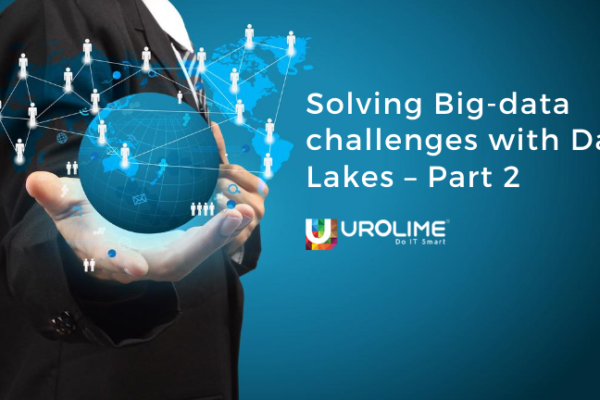For big organizations at scale, once miscalculated metrics like cost per unit, or delayed data can have a huge impact which can amount to millions of dollars. So, the IT team would be constantly looking for ways to generate more accurate and faster data.
That is how Amazon in 2019, built a data lake to support one of the largest logistics networks on the planet. Later it became internally known as the Galaxy data lake and now the various departments are working on moving their data into it.
So, what is a Data Lake? It is a centralized secure repository that allows users to store, govern, discover, and share all the structured and unstructured data at any scale. Usually, it does not require a pre-defined schema, so it can directly deal with raw data as it is, process and save it without the insights required for future use.
The following figure shows the key components of a data lake:
Ø Intake of structured and unstructured data
Ø Catalogue and Index data for analysis
Ø Large scale storage of data and security
Ø Connect data with analytics and machine learning
The challenges of Big data
The challenges with big data with organizations at the scale of Amazon are data silos, difficulty analyzing diverse datasets, data controllership, data security, and incorporating machine learning (ML). Let’s look into these challenges and see how a data lake can help solve them.
Unified Data
The key purpose of why companies choose to go for data lakes is to break down data silos. Even companies that have invested in data warehouses often report data silo issues, where data resides in different places, controlled by different groups
For example, a company many have separate data for the sales department that is separate from a customer-service or marketing department. Because data is separated and fragmented, decision-makers do not have a holistic view of the data and it hinders how their actions and decisions impact the company. Even companies that have invested a good budget in setting data warehouses often report data silo issues, which are caused when multiple warehouses contain duplicative data. These situations often happen when a company grows fast and/or acquires new businesses.
A data lake solves this problem by uniting all the data into one central location. Teams can continue to function as small independent units, but the data in the data lake can be used for future analytics.
Flexibility with diverse datasets
Another challenge for the big daddies is data structures and information varies across the different divisions of their organization. Data of varying formats in an unstructured format may come into the organization through the ERP systems, IoT devices, sensors, and through eCommerce applications.
Data lakes allow organizations to import any amount of data in any format because there is no pre-defined schema. You can even take data in real-time. Data from multiple sources can be collected and move it into the data lake in its original format. It supports building links between information that might be labeled differently but represents the same thing. Moving all your data to a data lake helps traditional data warehouses by giving easy access to structured data very easily as well as store and manage huge chunks of semi-structured and unstructured data.
![]()




